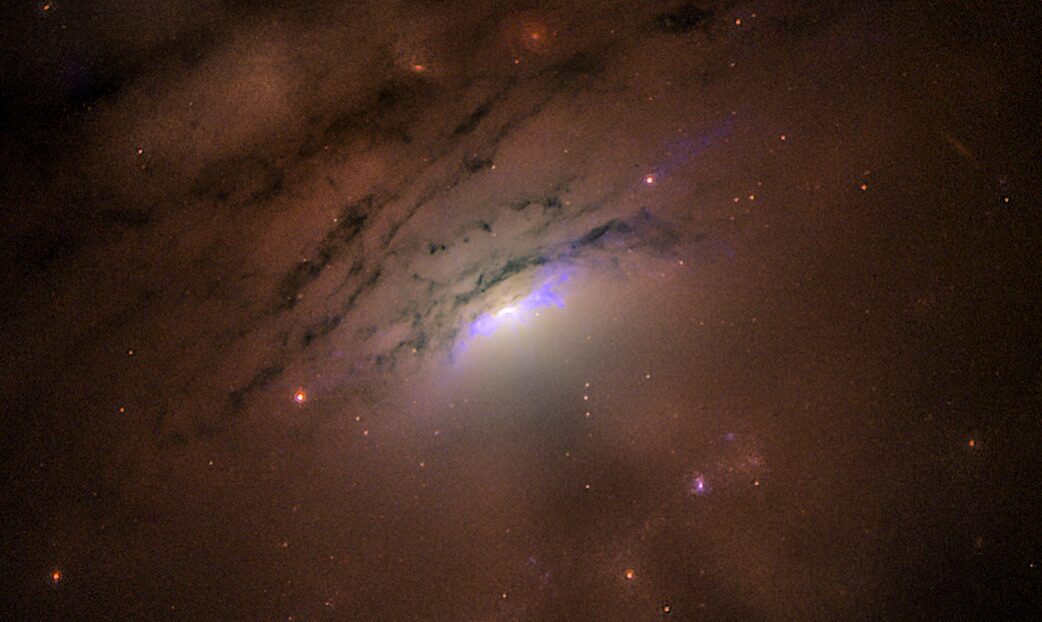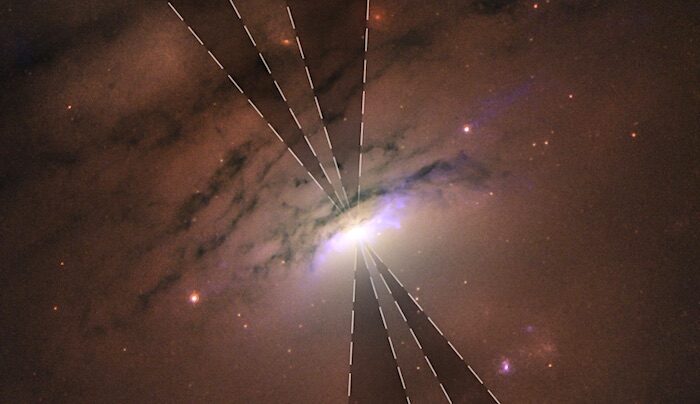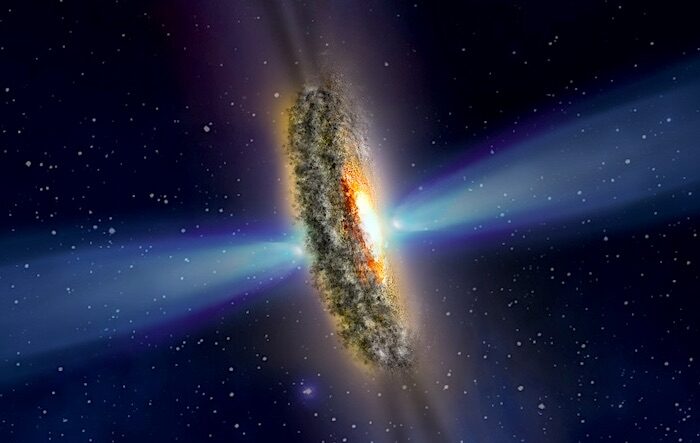
Black holes are the universe's greatest monsters, rapidly consuming everything in their vicinity. Their gravity is so powerful that not even light can escape them, an extraordinary fact which also makes them invisible to us and thus incredibly hard to study.
However, experts have noticed vast shadows and narrow, bright rays stretching out from the center of the galaxy IC 5063, as if something enormous is standing in the way of the intense light.

Some shafts of light penetrate the gaps in the dust ring, creating bright rays that resemble the beams of light that can be seen radiating from the sun at sunset.
"We think we've found evidence that there is probably dust all over the galaxy scattering light from the accreting black hole in the galaxy's active nucleus, and that the light can illuminate almost the whole galaxy," explained astronomer Peter Maksym of the Harvard Smithsonian Center for Astrophysics.
Because scientists have never witnessed this phenomenon before, it may take them some time to definitively prove that a black hole is causing the strange shadows and beams. However, the development presents a tantalizing scientific discovery and a rich opportunity for further research.




Reader Comments
In times long gone, science was about facts, and a thing called "scientific method". Now it is about funding. And keep them flowing...
No wonder they hate Karl Popper...
To me, it's so sad! because learning is life! And these poor dumbed down generations (which anger me to no end.. indeed ... I already wrote "Irritating") but, it's more sad because the wonder of the infinitudes of life, and learning them, IS life. I'm confident that you know what I mean.
RC
Excellent quote! Yours? (Not in the above article nor comments.)RC